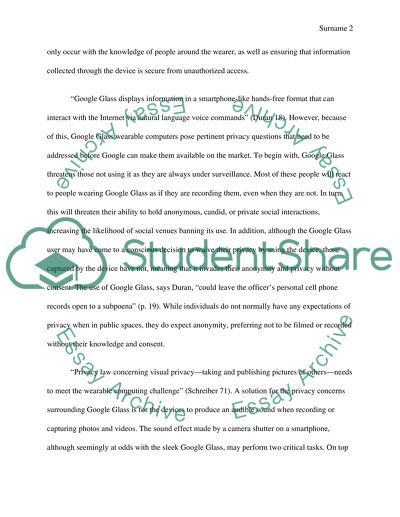Cite this document
(“Solutions regarding Google Glass privacy issues Research Paper”, n.d.)
Solutions regarding Google Glass privacy issues Research Paper. Retrieved from https://studentshare.org/miscellaneous/1649617-solutions-regarding-google-glass-privacy-issues
Solutions regarding Google Glass privacy issues Research Paper. Retrieved from https://studentshare.org/miscellaneous/1649617-solutions-regarding-google-glass-privacy-issues
(Solutions Regarding Google Glass Privacy Issues Research Paper)
Solutions Regarding Google Glass Privacy Issues Research Paper. https://studentshare.org/miscellaneous/1649617-solutions-regarding-google-glass-privacy-issues.
Solutions Regarding Google Glass Privacy Issues Research Paper. https://studentshare.org/miscellaneous/1649617-solutions-regarding-google-glass-privacy-issues.
“Solutions Regarding Google Glass Privacy Issues Research Paper”, n.d. https://studentshare.org/miscellaneous/1649617-solutions-regarding-google-glass-privacy-issues.


